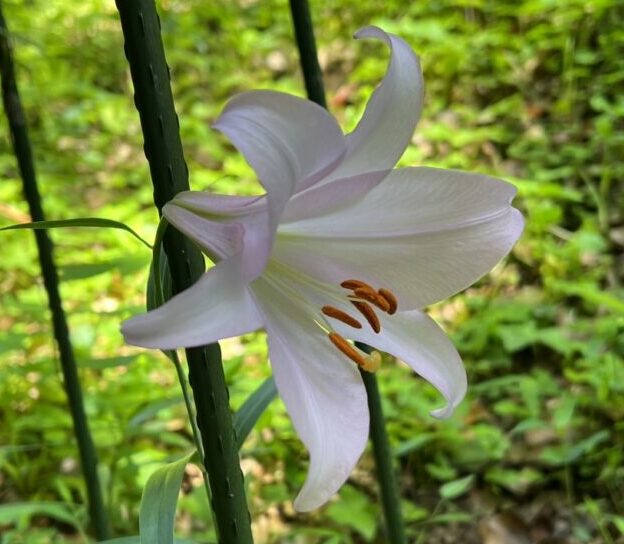三輪山シリーズ#10 「日本最古のゆり祭り」
Do you know about Japanese festivals? Japan’s oldest lily festival has been held at Isagawa shrine in Nara Prefecture. At 4T-AMKY, Teachers and Students write about Japanese culture, food, history, many spots to visit, and other stuff. Enjoy reading and knowing about deeper Japanese culture!
Mount Miwa#10 ‐The Oldest Lily Festival in Japan.
Lilies in Japan
Lilies, known as “yuri” in Japanese, begin to bloom in June and can be enjoyed until August, depending on the variety. They have renowned locations throughout Japan, and lily festivals are held in various regions.

Mr. Yukio Nemoto, from whom I’ve been learning Kampo medicine (Japanese traditional herbal medicine), also serves as the head of the Tokyo Branch of Ōmiwa Shrine and possesses profound knowledge of Japanese culture. I had the pleasure of hearing an intriguing story about lilies from him.
Japan’s oldest lily festival
In the auxiliary shrine of Ōmiwa Shrine, one of our country’s oldest shrines, Isagawa Shrine in Nara hosts Japan’s oldest lily festival. This festival is officially known as the ‘Saikusa Festival.’ ‘Saikusa’ refers to the Japanese native lily called ‘sasayuri,’ named for the fact that its branches typically divide into three. It is said to take seven years from a seed to become a flower.

History
According to the “Nihon Shoki (Chronicles of Japan)” (completed in 720), the festival’s origin can be traced back to when Emperor Jinmu entered Yamato Province and encountered seven maidens carrying sasayuri by the Sai River. He fell in love with a maiden named Himetataraisuzu-hime, who was leading the group, and married her. Therefore, the festival has an extremely ancient origin and is also specified in the Taihō Code (established in 701) as a national festival that must always be held to ward off pestilence.

Kampo medicine
Yuri is also used in Kampo medicine to treat diseases with fevers accompanied by mental distress. The name “yuri (百合 in chinese character),” which literally means “a hundred combinations” in Kampo medicine, is said to have been derived from its use for obscure and complex illnesses that seem to combine hundreds of different maladies. In any case, lilies are not only visually stunning, but also possess significant medicinal value when consumed.

ゆりの花
6月から咲き始め、種類によっては8月まで楽しめる百合(ゆり)の花は、日本全国に名所があり、ゆり祭りも各地で開かれています。
私が漢方を学んでいる根本幸夫先生は、大神(おおみわ)神社東京分祠(ぶんし)の代表でもあり、日本文化にも詳しい方です。先生から、ゆりに関する興味深いお話を伺いました。
日本最古のゆり祭り
我国最古の神社である大神神社の摂社で、奈良市にある率川(いさがわ)神社では日本最古のゆりの祭りが行われています。その正式名称は三枝祭(さいくさのまつり)といいます。三枝とは日本特産のゆり、笹百合(ささゆり)のことで、花のつく枝が三枝に分かれることが多いことから三枝とよばれます。種子から花を咲かせるまでになんと7年の歳月がかかるそうです。
歴史
祭りの由来は『日本書記』(720年に完成)によれば「神武天皇が大和国に入り、狭井(さい)川のほとりでささゆりを持つ7人の乙女に出会い、その先頭を歩いていたヒメタタライスズヒメを見初めて結婚した」ことに始まります。
なので、この祭りの起源は非常に古く、『大宝律令』(701年)には必ず施行しなければならない疫病鎮めの祭りとして記載されています。
漢方薬にも使われる
ゆりは漢方薬としても、精神不安を伴う熱病に用いられます。漢名の百合の由来は、百の病が合わさったような訳の分からない病に用いられたことから命名されたといいます。ともあれ、ゆりはみても美しいし、飲んでも薬となる非常に意義深い植物です。
Aki Sawaguchi.






